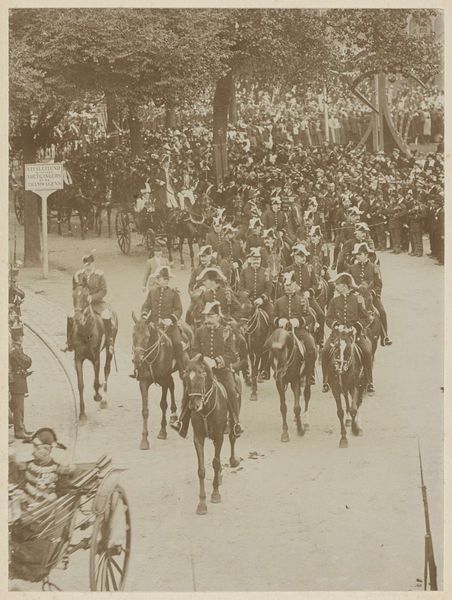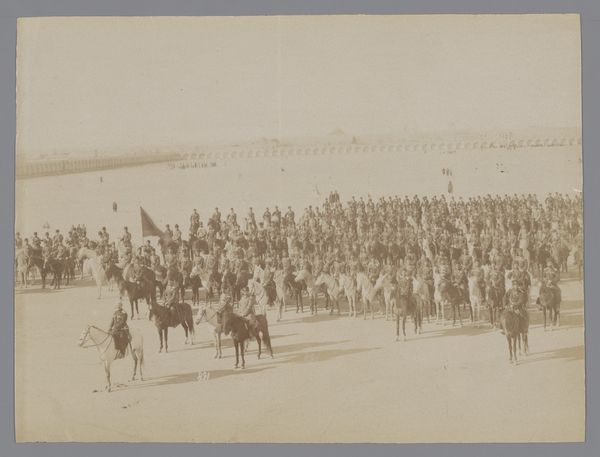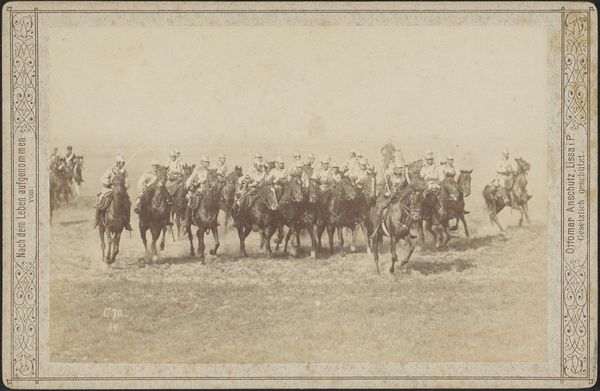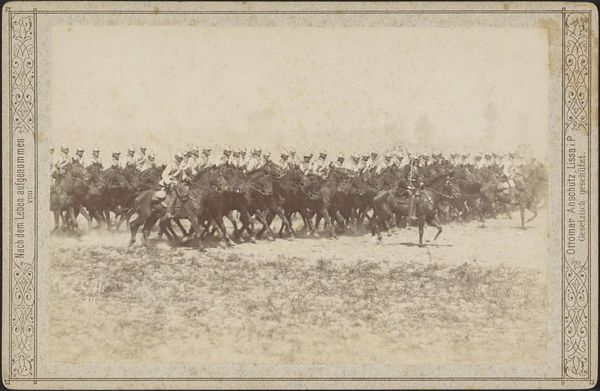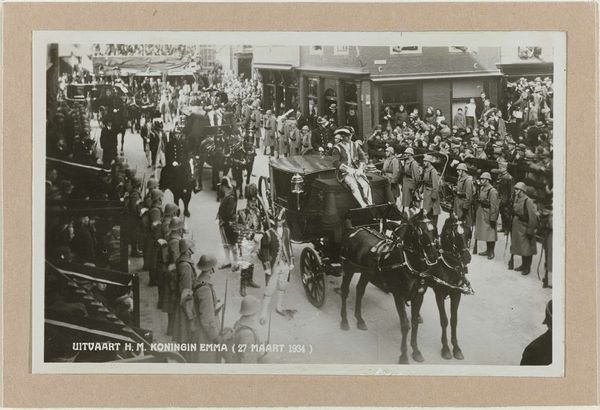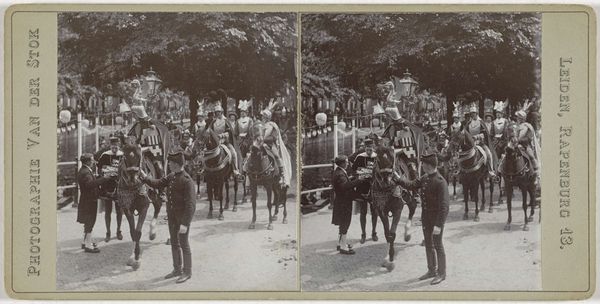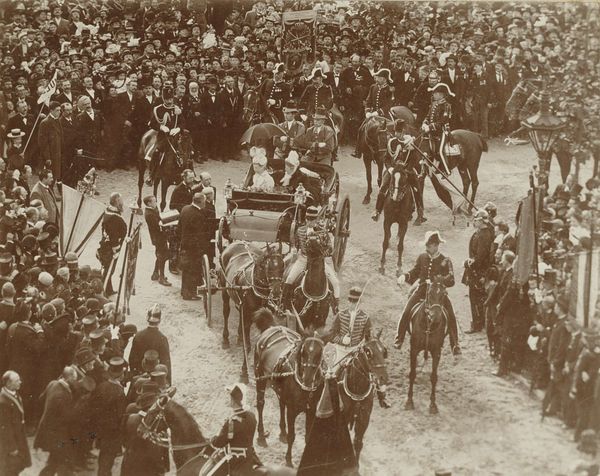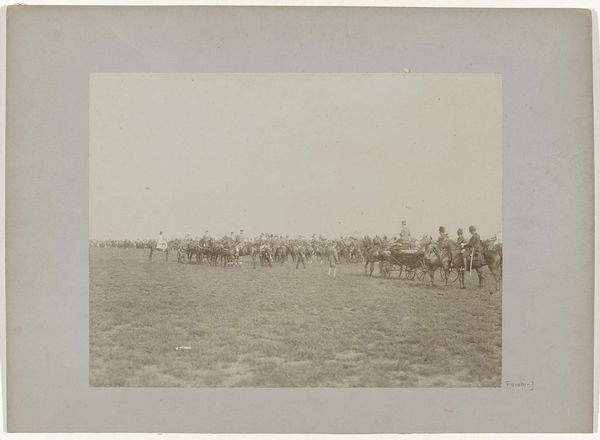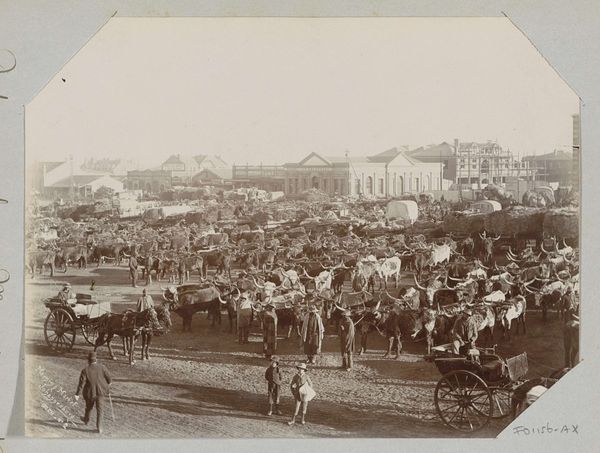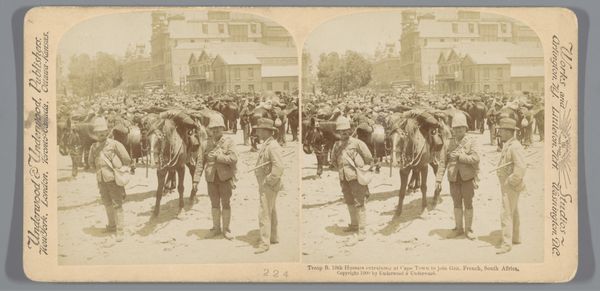
Ontvangst van Koningin Wilhelmina en Koningin-Moeder Emma op het Weesperpleinstation te Amsterdam 1898 - 1899
0:00
0:00
Dimensions: height 119 mm, width 170 mm, height 138 mm, width 189 mm
Copyright: Rijks Museum: Open Domain
Curator: What a spectacle! The massing of bodies creates an overwhelming sense of occasion. Editor: Indeed. We’re looking at "Ontvangst van Koningin Wilhelmina en Koningin-Moeder Emma op het Weesperpleinstation te Amsterdam," taken circa 1898-1899 by Guy de Coral & Co. It depicts the arrival of Queen Wilhelmina and Queen-Mother Emma at Weesperplein Station in Amsterdam. Curator: The medium itself—a print photography—is crucial here. Photography was relatively new at this point. This was a method of documentation. We might think about the physical properties, the labour, and the capital investment. The cost of equipment, transportation, and the printing of the photograph all would contribute to an understanding of that context. Editor: And consider the societal implications: Wilhelmina's youth and ascension to the throne signaled a new era for the Netherlands, stepping out of her mother's regency. What narratives does this photo perpetuate about gender and power, and how is the monarchy seen by ordinary people on the street? It's also a record of transportation technology, think about train development through these visual records, and class stratification represented by the distance of the monarchs from the onlookers. Curator: Note the texture—the photographic paper has a slight sheen to it. And look at the way light is captured. What processing occurred to achieve such tone? It feels intentional and points toward artistic choice beyond mere reportage. Editor: The stiff formality is quite striking. The mounted guards with backs turned dominate much of the image space, turning the arriving queens into more of a performance rather than any tangible accessibility for many. What is on view for the working-class audience? How does their consumption of this photograph influence their perceptions of these ruling-class women? Curator: Well, in purely material terms, they’d get a very standardized and mass-produced product made available on an unprecedented scale for images of political life. These mass production aspects change the meaning compared to hand painted depictions. Editor: A good reminder that this image functions on various interconnected planes—public performance, technological advancement, royal representation, and social symbolism are layered into a seemingly simple photographic moment. Curator: Yes, to trace the movement of this photo through society, it’s placement, viewing context, cost etc., can tell an in-depth history through material production, circulation, and use. Editor: Absolutely, a photograph doesn't exist in a vacuum; instead, it invites us to engage in critical thinking about broader systems of power.
Comments
No comments
Be the first to comment and join the conversation on the ultimate creative platform.
